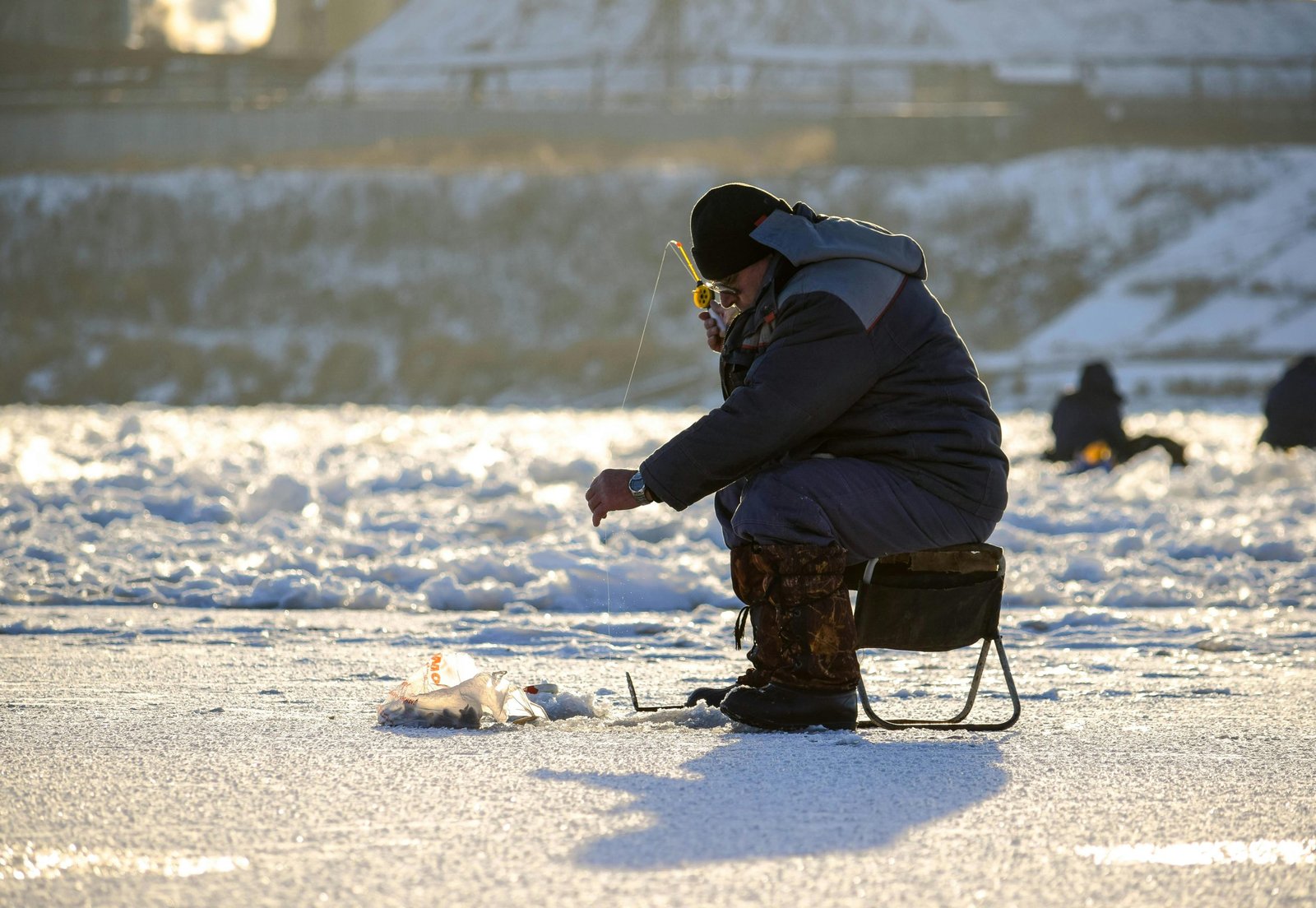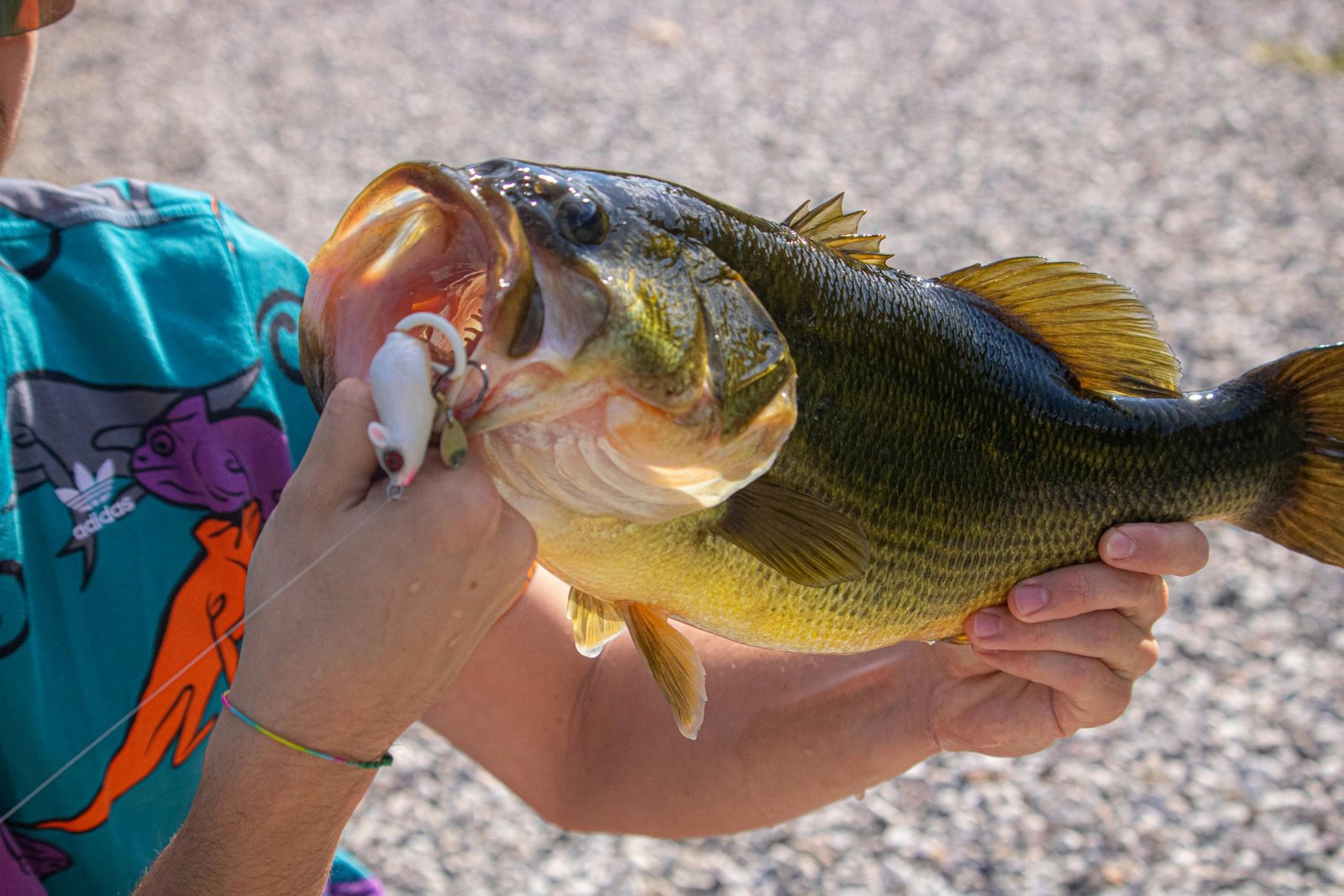
I know that ice fishing for walleye, just like any type of fishing, can be both a pain and rewarding at the same time. However, the key to success is having the right lures.
Sometimes fish will bite on everything, sometimes they bite on a specific type of lure, other times they don’t bite at all. That’s why when searching for “the best lure for (any fish you might think of)”, always keep in mind that what works for me and the lake I’m fishing in, won’t have the exact same results for you.
First and foremost, it is important to note that walleye are known for their preference for live bait. This means that minnows, especially fathead and shiner minnows, are a top choice for many anglers. Tip-ups or jigging with a live minnow can be effective in attracting walleye.
Lures can work just as good, jigs or spoons being the most widely used. Jigs can be tipped with a minnow or plastic bait to imitate live prey.
Spoons, on the other hand, can be used to create a flash of light and vibration to attract walleye.
Again, it is important to experiment with different colors and sizes to find what works best in your specific fishing location.
Keep in mind that these lures work best topped with live bait, for added scent and being overall more effective.
1. Spoons
))/3688335.json)
For spoons you want something that flashes nicely (which the majority of spoons do anyway) and, additionally, a rattle to cover more water. There isn’t much to talk about them, as they are simple pieces of metal colored and topped with feathers or other things that may entice fish to bite.
A good high-quality option that won’t fail is the Rapala Rattlin Minnow (see on Amazon). When you retrieve it slowly, it creates an interesting side-to-side movement and rolls, making it a good option for ice fishing, when walleye are more lethargic.
Here’s a review of it.
As the name might suggest, it also makes a noticeable rattle, maximizing the number of fish interested: flash, sound and, topped with live bait, scent.
A more affordable option is the Johnson Rattlin Scout Spoon Ice. This one has a more realistic design and comes with a brass rattle that’s sure to attract walleye from distance.
Honorable mention: Lindy Rattl’N Flyer Spoon
2. Crankbaits
))/4943214.json)
For cranks, my go to are Rapala Raps, especially the Rippin’ Raps. They are the smaller profile noisy crankbaits from Rapala, making them the perfect option for ice fishing. The vibrations are made by the BB rattle system, which gives them an advantage over spoons, in terms of rattle.
The Rippin Rap can be versatile in terms of depth and presentation. You can use it in various ways, such as jigging or ripping it through the water column, making it suitable for different conditions.
Another excellent option is the Salmo Chubby Darter. It is another versatile lure that will get chased by perch too. It’s known for attracting walleye, especially in clear water.
It has an unique, chubby and wide profile, which imitates a small baitfish. While designed for vertical jigging, the Chubby Darter can also be cast and retrieved horizontally, so you can fish it in other conditions, not just the ice.
The combination of its action, profile, and rattle makes it a must-have for walleye and other predatory fish.
3. Tungsten Jigs
))/3668752.json)
Some may prefer just hook and live bait, while others prefer artificials only. I think tungsten jigs solve that problem. They’re the best for hooking live bait while also keeping it light and simple. The density of these makes them sink very fast.
One of the best options is VMC Tungsten Tubby Jig. They work well for both soft plastics and live bait and they come in 18 different colors. It’s hard to pick a specific one, but I just go with the most flashy ones or the natural colors. No in-between.
Built with high-density tungsten, this jig sinks quickly and provides increased sensitivity, allowing you to feel subtle bites and movements. Quality wise, I have no complains about the hooks or how they hold up. Overall, tungsten jigs are a versatile lure you can always count on.
And when the walleye don’t seem to bite, just fish on of these with some minnow on them on you’re ready to catch some good perch.
4. Spinner
))/424075.json)
Small inline spinners, like the classic Mepps Aglia, can be effective when tipped with live bait. The spinning blade adds flash and vibration, attracting walleye.
The Aglia is another simple lure that will work well for walleye and perch. They’re like a spoon but the blades action makes it stand out a little more. They work best retrieved fast or in short bursts followed by a short pause.
Their effectiveness was already proved over decades, so you don’t need me to brag about it even more. We all know that, regardless of how many new lures appear on the market, old-school lures like these will still be around.
As mentioned above, get them in the smallest size possible.
5. Bucktail Jigs
))/3229400.json)
While they are commonly associated with open-water fishing, some anglers have found using bucktail jigs effective through the ice.
Bucktail jigs often have a natural and undulating action in the water, resembling the movement of live prey. This lifelike action can be appealing to walleye, especially when you jig them strategically.
They also have the advantage of holding scent well. You can enhance their effectiveness by tipping the jig with live bait, soft plastics, or adding scent attractants to entice walleye.
The combination of the bucktail’s natural appearance and the flash from the jighead can attract walleye visually. Choosing jigs with bright colors or reflective features may increase visibility, especially in low-light conditions.
Any bucktail you find is good, as long as it moves well while jigging and it holds up in one piece.
I know, they’re not the most commonly used for ice fishing, but they’re still an effective lure.
Walleye Behavior

As an ice angler, it is essential to understand the behavior of walleyes in hardwater to increase the rate you’re catching fish.
Walleyes have unique feeding habits and movements during winter that you need to know to catch them. In this section, I will discuss winter feeding habits and walleye movements and migrations.
Winter Feeding Habits
During winter, walleyes have a slower metabolism, and their feeding habits change. They tend to feed less frequently and prefer smaller meals. Walleyes are also more selective about their prey during winter, and they tend to feed on smaller forage fish, such as shiners, perch, and smelt.
It is essential to use the right bait to match the size and type of forage fish in the area. Some of the best baits for walleye ice fishing include live bait, such as minnows and wax worms, and small jigs that mimic the natural movement of those small forage fish.
Walleye Movements and Migrations
Walleyes are known to move and migrate during winter, but contrary to popular belief, they are not always on the move. In winter, walleyes tend to stay in areas with stable water temperatures and structure. They prefer areas with points, drop-offs, and other underwater structures that provide cover and ambush points.
Light levels also play a crucial role in walleye movements during winter. Walleyes tend to move more during low light conditions, such as dawn and dusk, and are less active during bright sunlight.
By studying the underwater structure and water temperature, you can identify the areas where walleyes are likely to be found and.
Bottom Line
I hope this post gave you an insight on what lures you should use for ice fishing, specifically walleye.
One thing I like to do is to prepare my tackle box for any fish I might encounter. I rarely go fishing with the intent of catching “just walleye” or “just crappie”.
When walleyes are not biting, or they’re not in the area, what are you going to do? Mindlessly cast the same lures over and over again?
You have to change things up. Always go with multiple types of lures ready, or try using more versatile ones for targeting multiple species.
Until the next one, tight lines!
Frequently Asked Questions
What types of jigging lures are most effective for catching walleye under the ice?
When it comes to walleye ice fishing, vertical jigging is one of the most effective techniques. The best jigging lures for walleye are those that can be fished vertically and mimic the movements of live bait. Aside the options from above, some of the most popular jigging lures for walleye include the Rapala Jigging Rap, the Bay de Noc Swedish Pimple, and the Northland Tackle Forage Minnow Spoon.
Which live baits are known to attract walleye during ice fishing expeditions?
Live baits are a great option for catching walleye during ice fishing expeditions. Some of the most effective live baits for walleye include minnows, nightcrawlers, and wax worms. When using live bait, it’s important to keep it lively and moving to attract the attention of the fish.
How should I set up my ice fishing line specifically for targeting walleye?
When targeting walleye during ice fishing, it’s important to use a light line with a sensitive rod. A 4-6 lb test line is ideal, and a 24-30 inch fluorocarbon leader can help increase your chances of success. Use a small jigging lure or live bait on a small hook to help attract the fish.
Can you recommend any new ice fishing lures that have proven successful for walleye?
While classic lures like the Rapala Jigging Rap and the Bay de Noc Swedish Pimple continue to be effective for walleye ice fishing, there are some newer lures that have also proven successful. The Clam Outdoors Leech Flutter Spoon and the Northland Tackle Puppet Minnow are two lures that have been gaining popularity among ice anglers.
What lure colors tend to yield the best results when ice fishing for walleye?
The best lure colors for walleye ice fishing can vary depending on the conditions. In general, it’s best to use lures that mimic the natural prey of the fish. Bright colors like chartreuse and pink can be effective in low light conditions, while more natural colors like brown and green can be effective in clear water. It’s always a good idea to experiment with different colors to see what works best in your specific location.
As an Amazon Associates member, I might earn a commission when you buy through the links on this page, at no additional cost to you. Thanks for helping me do what I like.




